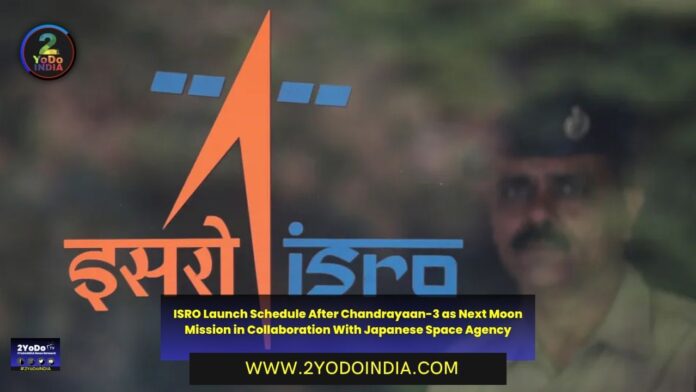Mission to study the Sun, and launching a climate observation satellite, a test vehicle as part of the Gaganyaan human space flight program, and an Indo-US synthetic aperture radar, ISRO has a busy schedule ahead.
In addition, XPoSat (X-ray Polarimeter Satellite), the country’s first dedicated polarimetry mission to study various dynamics of bright astronomical X-ray sources in extreme conditions, is also ready for launch, as per ISRO official.
Aditya-L1, the first space-based Indian observatory to study the Sun, is getting ready for the launch, most likely in September first week.
According to ISRO Chairman, S Somanath, the space agency has also lineup the launch of a climate observation satellite INSAT-3DS.
The launch of a test vehicle mission, for the validation of the crew escape system for Gaganyaan, the country’s maiden human space flight mission, is also expect soon.
S Somanath said :
“(Then) we have to launch NISAR, the India-US built Synthetic Aperture Radar”,
He said in his independence day address at ISRO headquarters here on 15th August 2023.
S Somanath said :
“So, our hands are full.”
“We are going to build a large number of satellites for our security purpose as well in the coming days,”.
According to ISRO officials, NASA-ISRO SAR (NISAR) is a Low Earth Orbit (LEO) observatory being jointly develop by US space agency NASA and ISRO.
NISAR will map the entire globe in 12 days and provide spatially and temporally consistent data for understanding changes in Earth’s ecosystems, ice mass, vegetation biomass, sea level rise, groundwater, and natural hazards including earthquakes, tsunamis, volcanoes, landslides.
As per ISRO official :
“It carries L and S dual band Synthetic Aperture Radar (SAR), which operates with Sweep SAR technique to achieve large swath with high-resolution data. The SAR payloads mounted on Integrated Radar Instrument Structure (IRIS) and the spacecraft bus are together called an observatory”.
Before undertaking the Gaganyaan human space (manned) flight mission, ISRO plan two unman missions.
As per ISRO official :
“We are getting ready for the (first of the two) unmanned crew module mission by the beginning of next year”.
The objective of the Gaganyaan mission is to demonstrate the capability of conducting a human space flight mission to LEO on board an Indian Launch vehicle.
The Orbital module consists of a Crew module and a Service module.
The crew module, which is a pressurised module, acts as living quarters for the crew.
The orbital module will be position in an approximately 400 km circular orbit around Earth for one to 3 days & the crew module will return to the designate location at sea.
After Chandrayaan-3, ISRO’s Next Moon Mission in Collaboration With Japanese Space Agency Gathers Steam
ISRO’s next likely Moon mission is in partnership with its Japanese counterpart, a venture that’s gathering steam.
Lunar Polar Exploration Mission (LUPEX) is a collaborative venture between Japan Aerospace Exploration Agency (JAXA) and the Bengaluru-headquartered Indian space agency.
JAXA and ISRO are developing the rover and lander, respectively.
The rover will carry not only the instruments of ISRO and JAXA but also those of the US space agency NASA and the European Space Agency (ESA).
Vice-Chair of Japan’s Cabinet Committee on National Space Policy and Director General, of the National Astronomical Observatory of Japan, Saku Tsuneta, visit ISRO headquarters here earlier this month and had a meeting with the space agency’s Chairman S Somanath.
They discus the progress of the LUPEX mission.
As per ISRO official :
“Development of a smaller lander for the LUPEX mission was discussed, among many other things,”.
According to JAXA, the LUPEX mission is aimed at exploring the lunar polar region’s suitability for establishing a base on the Moon for sustainable activities, obtaining knowledge regarding the availability of lunar water-ice resources, and demonstrating lunar and planetary surface exploration technologies such as vehicular transport and overnight survival.
Ahmedabad-based Physical Research Laboratory (PRL), an autonomous unit of the Department of Space, has propose multiple instruments in the LUPEX mission mainly to carry out measurements on the surface and subsurface near the permanently shadow polar region of the Moon.
The objective of one of the propose instruments, Permittivity and Thermo-physical investigation for Moon’s Aquatic Scout (PRATHIMA) is in-situ detection and quantification of water-ice mix with lunar surface and sub-surface soil using a rover/lander platform.
The aim of another propose instrument, Lunar Electrostatic Dust EXperiment (LEDEX) is to detect the presence of charge dust particles and confirm the dust levitation process in the volatile-rich polar region, and to estimate approximate dust size and flux of charge levitated dust particles.
As per ISRO official, the LUPEX mission is said to be launch in the year 2025.





